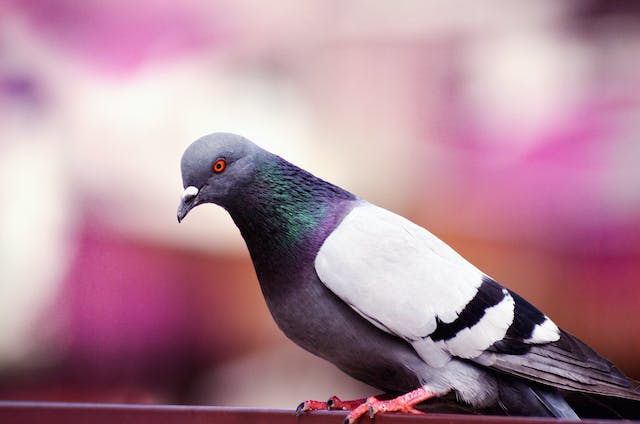
Why do birds need to see ultraviolet light? It helps them with foraging, navigation, and signaling to each other.
We can only see combinations of three colors: red, green, and blue. We have cones that detect these colors in our eyes. Most birds can also see ultraviolet light. They have four types of cones in their eyes. They have the cones to detect red, green, and blue that we have, but they also have a cone to detect ultraviolet light. The visible light we can see is electromagnetic radiation between the wavelengths of 380 nanometers and 750 nanometers. 380 nm is purple, and 750 nm is red. Ultraviolet light has a shorter wavelength than visible light and is roughly between 100 nm and 380 nm. We cannot see it because our eyes only have the three types of cones. We cannot see UV light, but we can see its effects if we use a blacklight. The UV light it gives off is invisible to us, but it is absorbed by fluorescent substances that give off a light that we can see.
So, why do birds need to be able to see UV light? There are several reasons. The first is for finding food. There are many types of birds and they eat a huge variety of foods, such as insects and berries. UV light helps them when they are trying to find insects. Most insects and spiders hide on the underside of leaves and birds need to find this side as quickly as they can. If we look at a tree, all of the leaves are uniformly green, and it takes us a while to work out which side is the top side and which the bottom side of the leaves. Birds don’t have this problem because the top side of the leaf reflects more UV light and appears a different color to them. They can very quickly move from leaf to leaf, looking for insects. Many insects also have a body coating that reflects UV light, making them very shiny to an animal that can see UV light. It also helps them to find berries and fruit because they have a waxy coating that reflects UV light. A lot of seeds also reflect UV light.
Being able to see UV light also helps birds of prey to hunt. Many people have wondered how birds of prey are able to get enough to eat because the rodents they hunt for are so well hidden and small. It turns out that a lot of rodents will mark their territory with urine, in the same way dogs do. They do this a lot. It turns out that urine reflects UV light. Birds of prey can glide in the sky and just look for the shiny urine trails to find their prey. Fascinating.
Birds use UV light to help them fly through foliage, trees, and thick undergrowth more quickly. For the same reason that they can quickly find the underside of a leaf, UV light makes all of the leaves stand out very clearly. To us, they all look green and we would have trouble navigating through them, but, to birds, they all stand out and they have no trouble moving around them at speed.
Birds also use UV light for sexual signaling and to identify each other. UV light shows markings on many birds that we simply cannot see. We can see the colors on brightly colored birds, and experts always assumed that was all birds used to choose a mate. But, there are some species of bird, such as the blue tit, where the male and female are exactly the same color. The experts wondered how the birds could tell the males and females apart. When they looked at them through a camera that could see UV light, they discovered that the male birds had a patch of feathers on their heads that reflected UV light, distinguishing them from the females. Many birds use UV light to signal things that we cannot see.
Crows are another example. To us, they appear as pure black. The females are slightly smaller than the males, but, to all intents and purposes, they look the same. With a camera that can see UV light, it is possible to see that crows have a lot of patterning. To us, they all look the same. To other crows, the males and females are obviously different, and they can probably even tell individual crows apart by their UV patterns. And this is what I learned today.
Photo by Creapattern: https://www.pexels.com/photo/gray-and-white-pigeon-596792/
Sources
https://scied.ucar.edu/learning-zone/atmosphere/ultraviolet-uv-radiation
https://www.nwf.org/Magazines/National-Wildlife/2012/AugSept/Animals/Bird-Vision
https://www.sciencealert.com/birds-can-see-uv-light-now-scientists-can-show-us-what-that-looks-like
https://phys.org/news/2016-07-birds-super-sense-ultraviolet-vision.html
https://royalsocietypublishing.org/doi/10.1098/rspb.1999.0897
https://academic.oup.com/bioscience/article/50/10/854/233996
